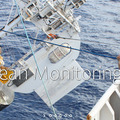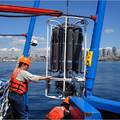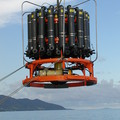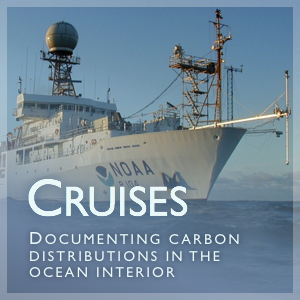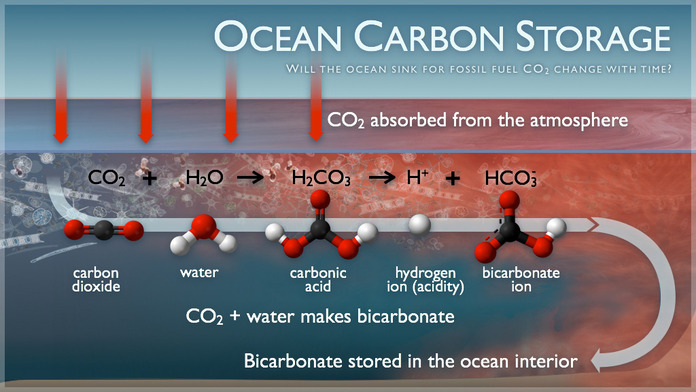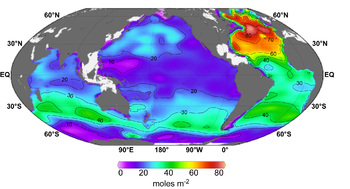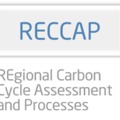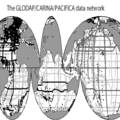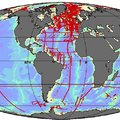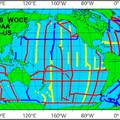CO2 uptake is not the same as carbon storage. Anthropogenic CO2 absorbed in one region may be moved by ocean circulation and ultimately stored in a different region.
Recognizing the need to constrain the modern oceanic uptake, transport, and storage of human-derived (anthropogenic) CO2 and to provide a baseline for future estimates of oceanic CO2 uptake, two international ocean research programs, the World Ocean Circulation Experiment (WOCE) and the Joint Global Ocean Flux Study (JGOFS), jointly conducted a comprehensive survey of inorganic carbon distributions in the global ocean in the 1990s. After completion of the US field program in 1998, a five year effort called the Global Ocean Data Analysis Project (GLODAP) was begun to compile and rigorously quality control the US and international data sets including a few pre-WOCE data sets in regions that were data limited. These data have greatly improved our understanding of the spatial distributions of natural and anthropogenic carbon in the ocean and are being used to examine the mechanistic controls on ocean carbon distributions.
A map of the anthropogenic CO2 ocean column inventory shows that the carbon is not evenly distributed in space. More than 23% of the inventory can be found in the North Atlantic, a region covering approximately 15% of the global ocean. By contrast, the region south of 50°S represents approximately the same ocean area but only has ~9% of the global inventory. Despite the relatively slow equilibration rate for CO2 in seawater (approximately 1 year versus weeks for oxygen), uptake at the surface does not fully explain the spatial differences in storage. The primary reason for these differences is because of the slow mixing time in the ocean interior and the fact that waters only move into the deep ocean in a few locations. The highest inventories are found in the locations where mode and intermediate waters are moving anthropogenic CO2 into the ocean interior.
The single snapshot of the ocean provided by the GLODAP data product is not ideal for understanding the temporal patterns of variability in ocean uptake and storage. The most important component of an assessment of ocean biogeochemical change, whether of natural or anthropogenic origin, is high-quality observations. The WOCE/JGOFS data set provides an important point of reference for ocean carbon studies, but many other useful data sets exist or are being collected which have not been analyzed in such a context yet because there has not been a coordinated effort to bring these data together and no data management system to make navigation and exploitation of these data convenient. The PMEL carbon group is working with our international colleagues to gather and provide quality control checks on ocean interior data to develop high-quality combined data sets and to make these data readily accessible to the public.
MISSION STATEMENT
The PMEL carbon group is committed to documenting the patterns of carbon storage in the ocean interior and how these patterns are changing with time. Our goal is to better understand ocean carbon system feedbacks and how the role of the ocean in the global carbon cycle is changing.
The PMEL carbon group is involved in several research projects to help us better understand ocean carbon storage.

